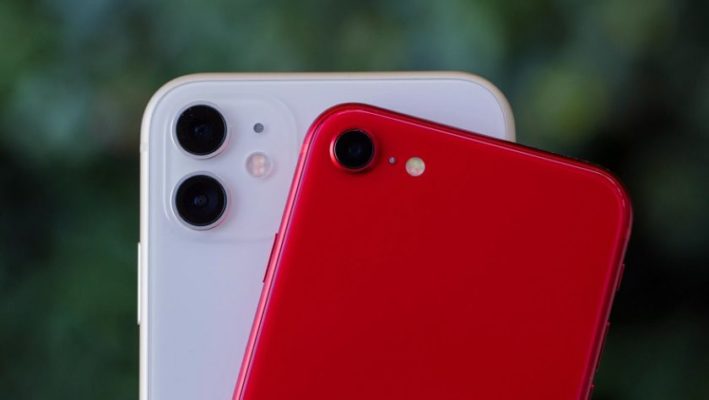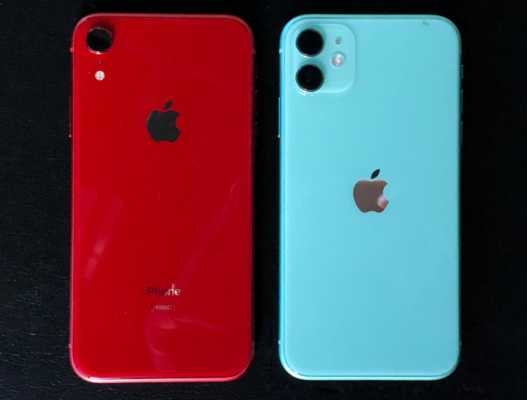iPhone 11 vs iPhone SE 2020 Apple comparison – which one has better camera? Do both of them support TouchID? or Which has longer battery life? The iPhone SE (2020) offers everything you could ever want from a modern smartphone at an unbeatable price. It scratches the itch of nostalgia at a time when fond memories and hopes of bright futures drive our day-to-day. But even with that in mind, it’s clear the iPhone 11 is the stronger phone. It has a more attractive and modern design, a more powerful camera, and some stronger special features. Reveal more in iPhone 11 vs iPhone SE 2020 Apple comparison and review.
However, those benefits are relatively small compared to the massive price gulf between the two phones, and with that in mind, it’s worth asking whether $300 is worth an additional camera lens, a bigger battery, and a prettier design. Sure, the iPhone 11 is the prettier and more modern of the two, but we’d be lying if we didn’t say the iPhone SE has a strong nostalgic appeal. The iPhone 11 is the phone to buy if money is no object — but if you don’t mind losing the sleek design and more powerful camera, save $300 and go for the iPhone SE (2020). Get comparative overview in iPhone 11 vs iPhone SE 2020 Apple comparison chart.
iPhone 11 vs iPhone SE 2020 price
The iPhone 11 starts at $699 / £729 / AU$1,199, for which you get 64GB of storage. Prices rise to $749 / £779 / AU$1,279 for 128GB and $849 / £879 / AU$1,449 for 256GB. So the iPhone SE 2020 is far, far cheaper than the iPhone 11.
The iPhone SE 2020 is out now. It starts at $399 / £419 / AU$749, for which you get 64GB of storage. 128GB meanwhile will cost you $449 / £469 / AU$829, and 256GB costs $549 / £569 / AU$999.
Then there’s the iPhone XR, which starts at $599 / £629 / AU$1,049 for 64GB of storage, rising to $649 / £679 / AU$1,129 for 128GB, and there’s no longer a 256GB model available. This then sits between the iPhone SE 2020 and the iPhone 11 in terms of price, but it’s much closer to the latter.
Who is this for – iPhone 11 vs iPhone SE 2020 Apple?
The iPhone 11
- If you want a bigger screen than the iPhone SE.
- If you want the iPhone 11’s ultra-wide camera, not to mention the absolute best cameras that Apple has to offer that include additional camera features, like Night Mode, better focusing, 2x optical zoom, and up to 5x digital zoom.
- If you want the higher quality selfies.
The iPhone SE
- The iPhone SE is perfect for anyone who isn’t fussy about specs or features, and “just wants an iPhone.”
- Whoever wants the core iPhone experience but doesn’t want to spend as much as $700, and is willing to sacrifice the multiple cameras.
- You can pre-order the iPhone SE from Apple now, and it’ll be available to buy starting April 24
iPhone 11 vs iPhone SE 2020 Apple UK comparison chart
| Apple iPhone SE (2020) | iPhone 11 | |
|---|---|---|
| Display size, resolution | 4.7-inch Retina HD; 1,334×750 pixels | 6.1-inch LCD Liquid Retina; 1,792×828 pixels |
| Pixel density | 326ppi | 326ppi |
| Dimensions (inches) | 5.45 x 2.65 x 0.29 in. | 5.94×2.98×0.33 in. |
| Dimensions (millimeters) | 138.4 x 67.3 x 7.3mm | 150.9×75.7×8.3mm |
| Weight (ounces, grams) | 5.22 oz.; 148g | 6.84 oz.; 194g |
| Mobile software | iOS 13 | iOS 13 |
| Camera | 12-megapixel | 12-megapixel (wide), 12-megapixel (ultrawide) |
| Front-facing camera | 7-megapixel | 12-megapixel |
| Video capture | 4K | 4K |
| Processor | Apple A13 Bionic | Apple A13 Bionic |
| Storage | 64GB, 128GB, 256GB | 64GB, 128GB, 256GB |
| RAM | Not disclosed | Not disclosed |
| Expandable storage | No | No |
| Battery | Not disclosed | Not disclosed |
| Fingerprint sensor | Home button | No |
| Connector | Lightning | Lightning |
| Headphone jack | No | No |
| Special features | Water resistant (IP67); dual-SIM capabilities (nano-SIM and e-SIM); wireless charging | Water resistant (IP68); dual-SIM capabilities (nano-SIM and e-SIM); wireless charging |
| Price off-contract (USD) | $399 (64GB), $449 (128GB), $549 (256GB) | $699 (64GB), $749 (128GB), $849 (256GB) |
| Price (GBP) | £419 (64GB), £469 (128GB), £569 (256GB) | £729 (64GB), £779 (128GB), £879 (256GB) |
| Price (AUD) | AU$749 (64GB), AU$829 (128GB), AU$999 (256GB) | AU$1,199 (64GB), AU$1,279 (128GB), AU$1,449 (256GB) |
iPhone 11 vs iPhone SE 2020 review
Display
- Widescreen LCD Multi‑Touch display with IPS technology
- 1400:1 contrast ratio
- True Tone display
- Wide color display (P3)
- 625 nits max brightness
The biggest difference is the size. The iPhone SE’s screen is just 4.7 inches, one of the smallest you can buy anywhere, while the XR and 11 sport 6.1-inch screens. Also, Apple uses “Liquid” technology in the iPhone 11 and XR to match the corners of the screen to the corners of the phone to give them an immersive effect. The iPhone 11 and XR both have a notch in place of a bezel for the camera.
While the iPhone 11 and XR might look dramatically different than the SE, they actually have extremely similar displays. All three are LCDs, and they all have identical 326ppi, making them all Retina displays. The rest of the specs are the same as well.
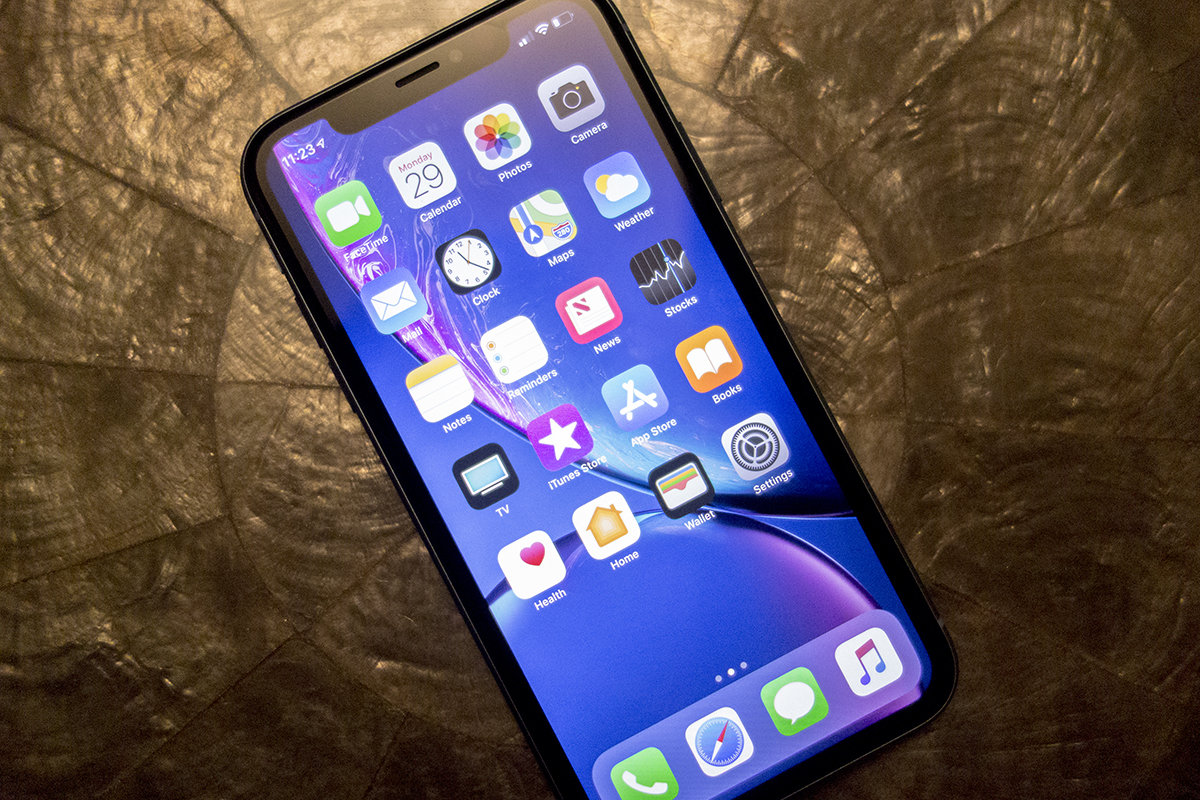
Of course, none of these displays can hold a candle to the iPhone 11 Pro’s OLED, but Apple’s LCDs are still surprisingly good in 2020. If you compare them side by side to an OLED display, you’ll definitely see the difference, but on their own, your eyes will be plenty happy with any of these displays.
iPhone 11 vs iPhone SE 2020 size
Dimension
- iPhone SE: 138.4 x 67.3 x 7.3mm
- iPhone XR: 150.9 x 75.7 x 8.3mm
- iPhone 11: 150.9 x 75.7 x 8.3mm
You don’t need to be a rocket scientist to see the difference between these three phones. The iPhone SE has a home button and the iPhone XR and iPhone 11 do not. But of course, the design differences are deeper than that.
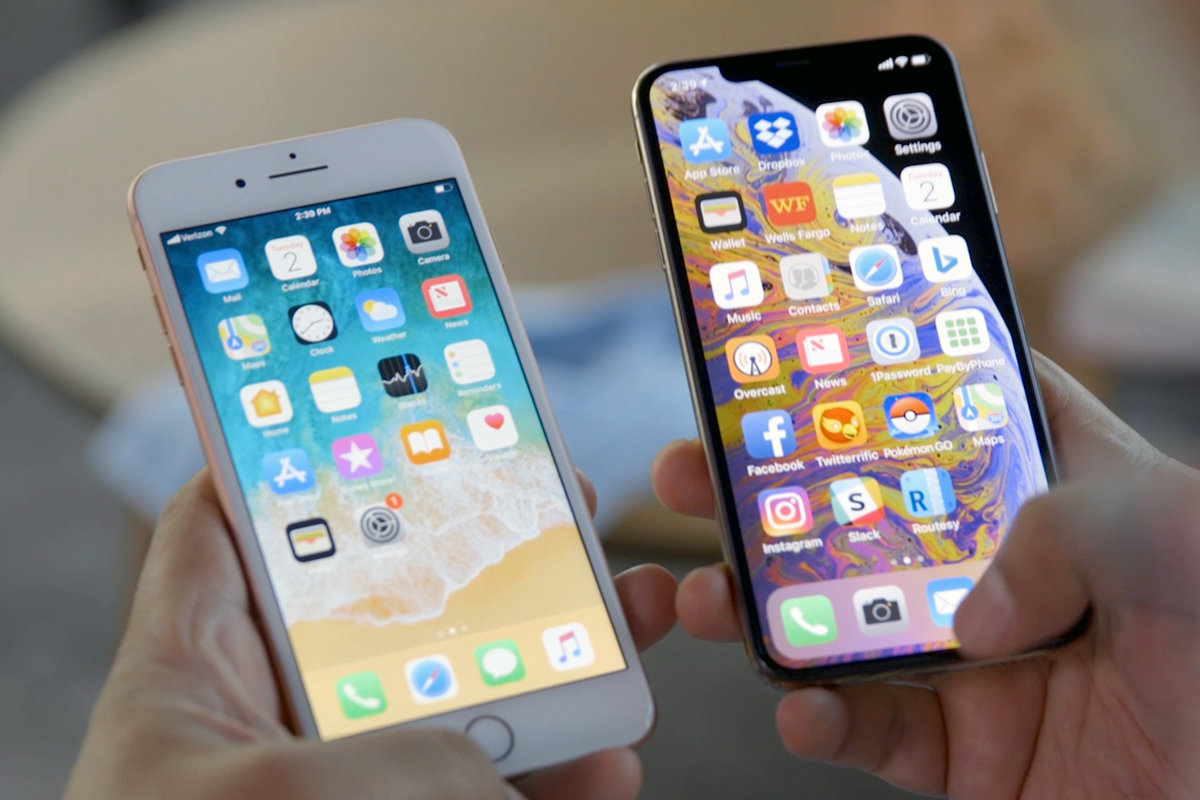
The iPhone SE adheres to the iPhone design Apple introduced with the iPhone 6: it has a huge bezel and a lot of dead space around the screen. Despite that, however, it’s a good deal smaller than the iPhone XR and 11.
As you can plainly see, the iPhone XR and 11 are identical in size and shape. They’re not big phones by any stretch, but the iPhone SE feels incredibly small by comparison, even with gargantuan bezels. It’s also noticeably lighter, at 148 grams versus 194 grams for the iPhone 11 and XR.
Around the back, they’re very similar too, with a camera in the left corner, a centered Apple logo, and a glass body. And there’s no shortage of color options with these phones either:
Color
- iPhone SE: Black, white, red
- iPhone XR: Black, white, red, blue, yellow, coral
- iPhone 11: Black, white, red, green, yellow, purple
This is largely subjective, but I wouldn’t recommend picking one of these phones just because you like a particular color. For one, you’re probably going to put it in a case anyway but more importantly, all of the colors look good, even the ones you wouldn’t think you’d like.
Biometrics- Touch ID
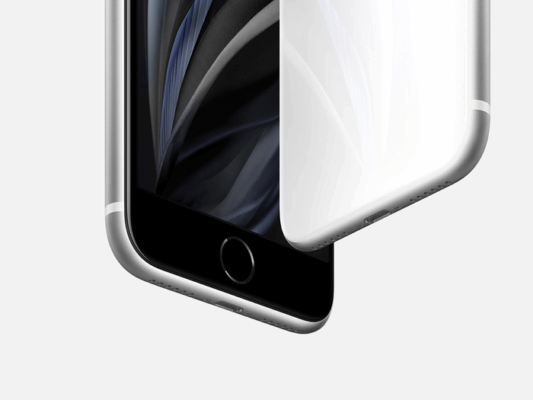
- The iPhone SE uses the classic Touch ID fingerprint sensor on the bottom bezel to unlock. It doesn’t have Face ID.
- The iPhone 11 uses Face ID to unlock.
Of all the differences between these three phones, the biggest is how you unlock, authenticate, and pay for stuff. On the iPhone SE, you use your fingerprint, and on the XR and 11, you use your face. Apple says Face ID is far more secure than Touch ID (1 in 1,000,000 chance of a false unlock versus 1 in 50,000), but both will do an excellent job of protecting your phone from prying eyes and quickly unlocking when you’re using it.
However, they’re not perfect. Face ID has recently been exposed for struggling to work when the user is wearing a face mask, but Touch ID has its own issues when the user is wearing gloves.
iPhone 11 vs iPhone SE 2020 battery life
- iPhone SE: 1,821mAh
- iPhone XR: 2,942mAh
- iPhone 11: 3,110mAh
The iPhone has always had great but not mind-blowing battery life and the three phones here stick with that motif. Apple doesn’t officially list the capacities of its batteries, but we know from teardown that they’re quite different.
And here’s how Apple officially reports how long each phone lasts:
- iPhone SE: About the same as iPhone 8 (13 hours of video playback)
- iPhone XR: Up to 1.5 hours longer than iPhone 8 Plus (16 hours of video playback)
- iPhone 11: Up to 1 hour longer than iPhone XR (17 hours of video playback)
If that’s not helpful, think of it in terms of good, better, and best. The iPhone SE’s battery is good, in that it’ll last you most–if not all–of a day of regular use. The iPhone XR will easily last a full day of normal-to-heavy use. And you won’t have to worry at all about the battery on the iPhone 11.
When it comes to charging, all three phones come with the same underwhelming 5W power adapter, which will take hours to fill any of them. However, they all support fast charging with an 18W adapter and a USB-C-to-Lightning cable, Your mileage will vary depending on the power adapter, but it’ll be at least twice as fast as the charger Apple supplies. They also all support 7.5W wireless charging with a third-party Qi charger.
iPhone 11 vs iPhone SE 2020 Camera
- iPhone SE: 7MP FaceTime HD camera, 1080p HD video (30 fps)
- iPhone XR: 7MP TrueDepth camera, 1080p HD video (60 fps)
- iPhone 11: 12MP TrueDepth camera, 4K video (60 fps)
That’s a big leap from the iPhone XR to the iPhone 11. Not only do you get a higher quality camera for FaceTime calls and selfies, you also can record 4K video. And since the iPhone XR and 11 have TrueDepth cameras, you can also create Memoji and Animoji, neither of which is available on the iPhone SE. You also can’t create slofies—Apple’s name for slow-motion selfie videos—on any phone other than the iPhone 11.
Whether you’re taking selfies or slofies, the front camera should factor into your buying decision. All three phones offer different capabilities in their front cameras, with the iPhone 11 standing out among the others:
Around the back, all three phones have the same 12MP Wide camera with OIS, 5x digital zoom, and f/1.8 aperture. However, the iPhone 11 pairs that lens with a 12MP Ultra Wide one for 2x “optical zoom out,” along with brighter True Tone flash.
All three phones also have portrait mode with Depth Control for adjusting the blur after the picture is taken, though it only works on people on the SE and XR. They all have Portrait Lighting as well, but the XR only has three effects (natural, studio, contour), while the SE and 11 have six (adding stage, stage mono, and high-key mono). The SE and the 11 also have a newer Smart HDR system than the XR.
And there’s one more feature you’ll only find on the iPhone 11: Night mode. All three phones are able to take excellent photos in normal lighting, but as you can see in the photo about comparing the SE to the 11, there’s simply no comparison when the lights turn low. The ability to take crystal-clear shots in bad lighting is the premier feature of the iPhone 11, and it’s no surprise that Apple didn’t bring it to the other phones here, even if they’re technically capable of handling it.
iPhone 11 vs iPhone SE 2020 Apple processor
The iPhone SE might look old, but it actually has the fastest processor Apple makes, at least for now. Both the iPhone SE and the iPhone 11 are powered by Apple’s A13 processor, which offers blazingly fast speeds. The XR, on the other hand, uses last year’s A12 processor, which is very capable but slightly slower. Hard-core users might notice a difference, but they should opt for one of the pro models anyway.
Apple doesn’t advertise the amount of RAM inside its phones because it really doesn’t matter. In simple terms, Apple provides the bare minimum that the system needs to run at its best for years to come, and in this case, that means the SE and XR have 3GB while the iPhone 11 has 4GB. But those numbers shouldn’t factor into your decision. All of these phones are plenty fast and more than capable of doing anything you’ll want to do.
Elsewhere, you get slightly better water-resistance on the iPhone 11. Apple says the 11 is rated IP68, meaning you can dunk it in two meters for up to 30 minutes (6.5 feet), while the SE and XR are IP67 rated, which only guarantees it won’t fry in one meter of water. Also, the iPhone XR is the only phone here that doesn’t support Wi-Fi 6 or gigabit-class LTE. And if you’re looking for Dolby Atmos support, you’ll only find it on the iPhone 11, as well as a U1 ultra wideband chip for indoor positioning to augment AirDrop and other location-based features, including Apple’s rumored Air Tags.
Software and updates
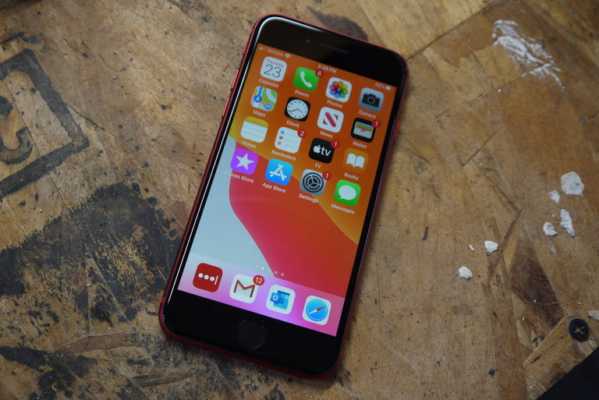
Like all current-generation iPhones, the iPhone SE and iPhone 11 run the same version of iOS and function identically where updates are concerned. iOS 13 has been one of the best so far, and auto-updates make keeping your OS up to date as simple as charging your iPhone at night and waking up to an updated phone in the morning. Both of these phones are likely to receive updates on the same day, and judging by Apple’s past record, will do so for a long time to come.
Special features
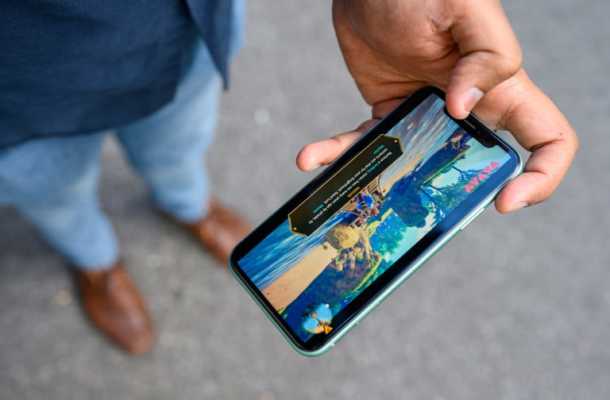
The iPhone SE is mostly a redux of the iPhone 8, and aside from an upgraded processor and iOS 13, it doesn’t really bring more to the table than the rest of the current lineup. However, we feel compelled to say that it’s actually its price that stands out as a special feature. Apple hasn’t released a phone starting at $399 in four years, and in fact it was the 2016 iPhone SE that launched at that price point. With the 2020 iPhone SE, Apple is acknowledging the demand for a cheaper device when many consumers may be in need of a new, modern device, but unable to justify or risk a $1,000+ price tag.
The iPhone 11 is a fantastic device, and its Night mode camera feature as well as support for surround sound with dual speakers place it firmly in competition with the best smartphones on the market. It also does its best to stand out with its array of bright colors and impressive battery life — but it’s the Animojis and Memojis powered by the Face ID feature that give it the edge over the iPhone SE. So many of Apple’s current special features are powered by the TrueDepth Face ID selfie camera, and without it, the iPhone SE is at a disadvantage.
